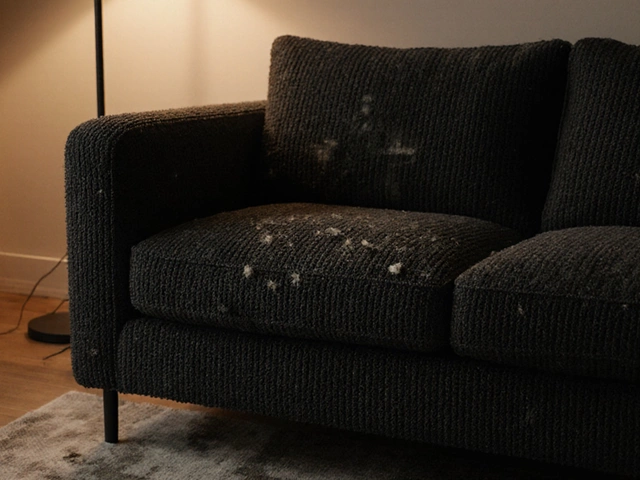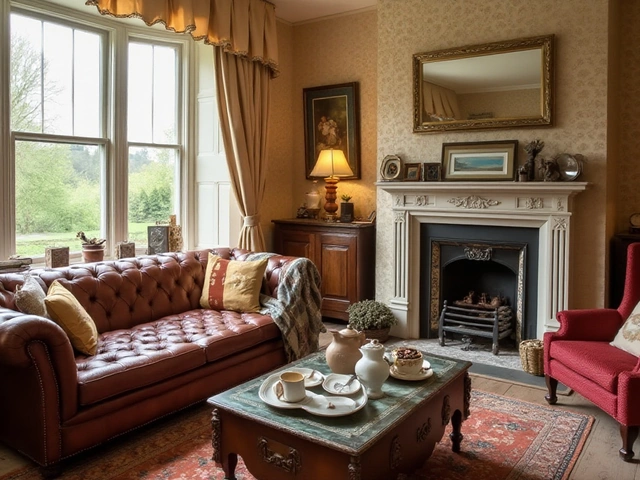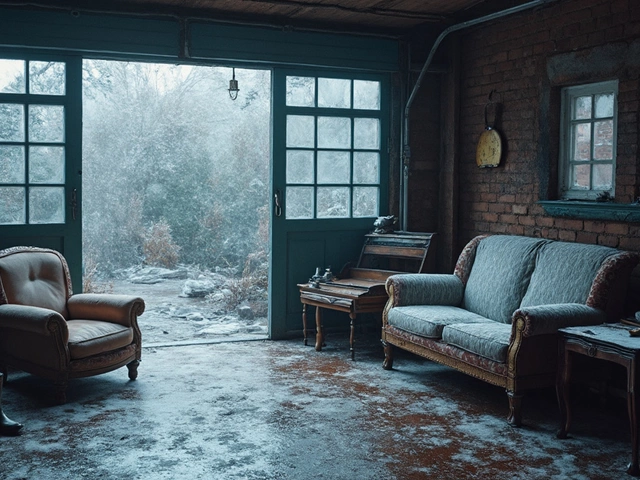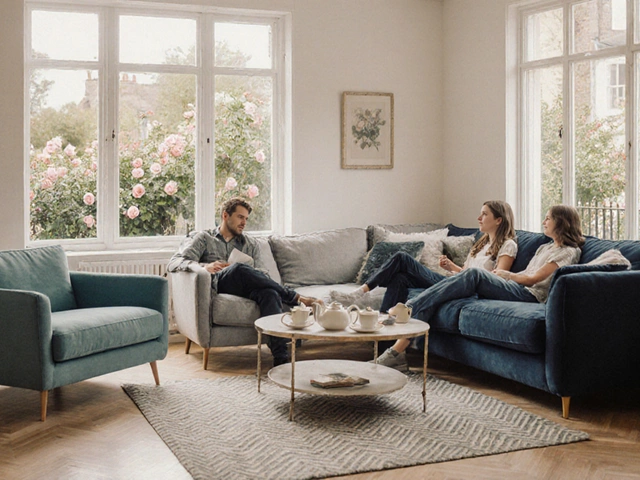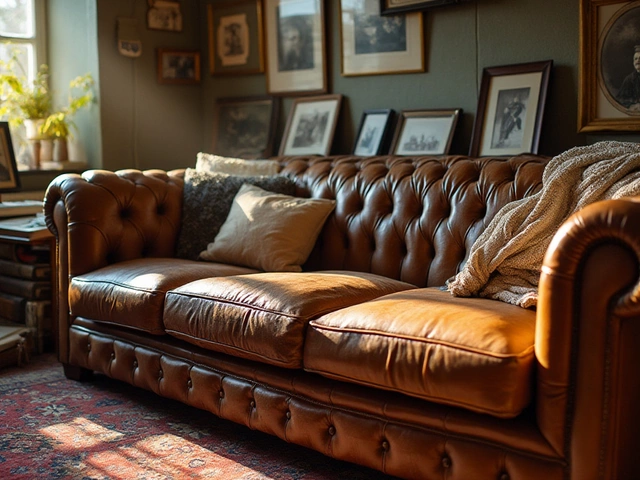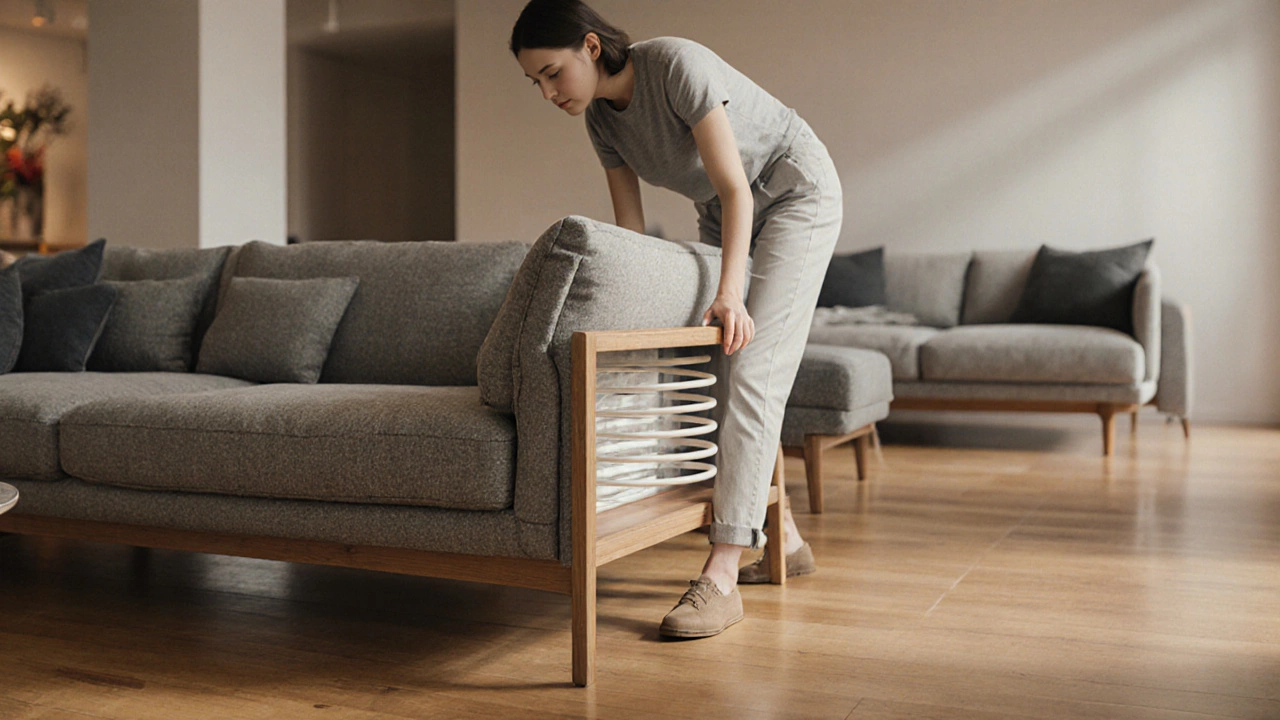 20
Oct,2025
20
Oct,2025
Couch Quality Checker
Couch Quality Assessment
Evaluate the couch based on key construction factors that determine long-term durability and comfort.
Quality Assessment
Based on your selections:
- Frame: N/A
- Springs: N/A
- Cushions: N/A
- Fabric: N/A
- Warranty: N/A
Ever walked into a showroom and wondered whether that plush‑looking Couch is built to last or just a pretty face?
Key Takeaways
- Solid wood frames and eight‑way hand‑tied springs are hallmarks of durability.
- High‑density foam or natural latex cushions keep shape for years.
- Fabric with a tight weave and a good abrasion rating resists wear.
- Check the warranty - reputable makers back their construction for at least five years.
- Use the quick checklist at the end to evaluate any couch before you buy.
Understanding Couch Construction
A high quality couch isn’t just about looks; it’s a collection of parts that work together. The main components are the frame, the springs, the cushions, and the upholstery. When each piece meets a high standard, the whole piece feels sturdy, comfortable, and looks good for a long time.
Frame Materials: The Skeleton of the Couch
The frame is the couch’s backbone. The best frames use Solid Wood - usually kiln‑dried hardwoods like beech, oak, or ash. These woods resist warping and can support heavy use. Engineered wood (MDF or particleboard) is cheaper but can sag under weight, especially in humid Australian climates.
Some premium models also use Metal Frames - either steel or aluminum - for a sleek look and excellent strength, though they can feel colder to the touch.
Cushion Fillings: Keeping Their Shape
Comfort starts with the cushions. High‑density foam (HD) with a density of 30-35 kg/m³ is a common baseline; it holds shape and resists bottoming out. For an extra bounce, look for Natural Latex. Latex is springy, breathable, and lasts longer than standard foam, though it adds to the price.
Feather or down tops add a plush feel, but they require regular fluffing and can flatten quickly if the base foam isn’t supportive.
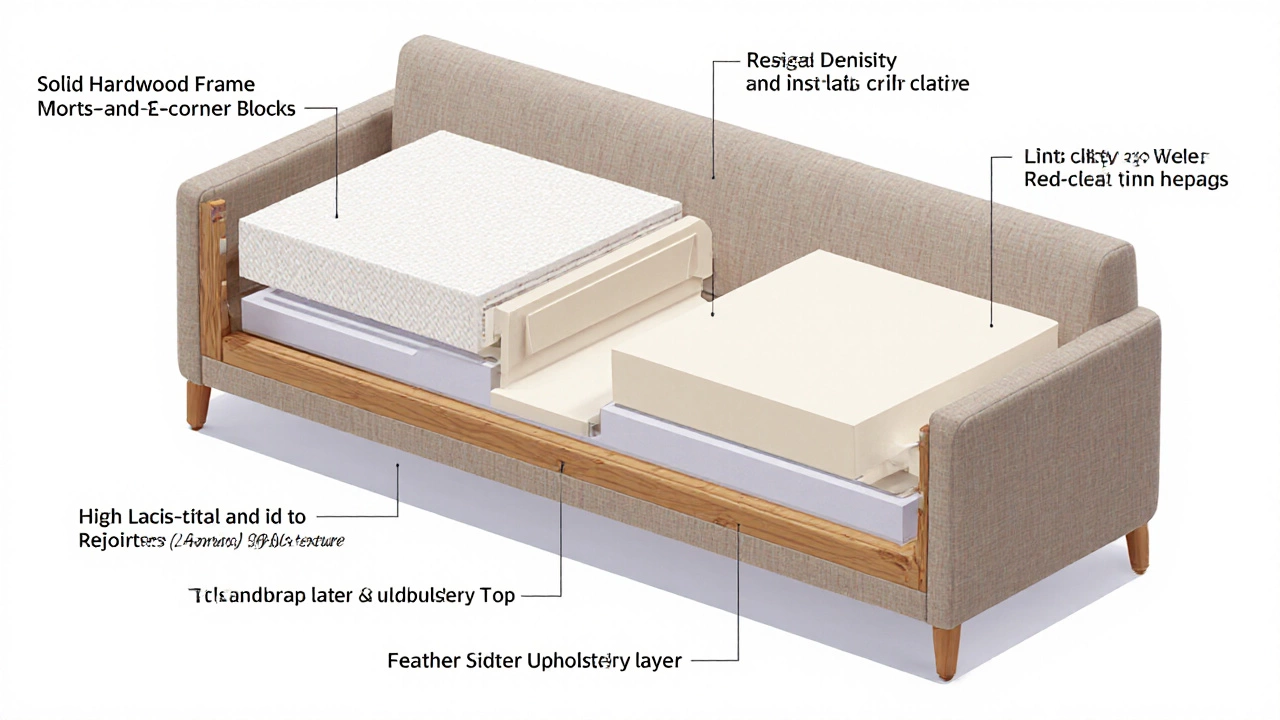
Upholstery Fabrics: The Skin of the Couch
The fabric you see and touch faces daily wear. A tight‑weave Cotton Blend with a stain‑resistant finish works well in family rooms. For pet owners, look for fabrics rated Microfiber (often 3‑4 Myles) - they repel liquids and hide scratches.
Leather is timeless and ages nicely, but genuine leather needs conditioning and can be pricey. Faux leather offers a similar look with easier maintenance, yet it can crack in hot Melbourne summers if low‑quality.
Check the fabric’s Abrasion Rating - a higher number means better resistance to everyday friction.
Sprung Systems: The Hidden Support Network
Under the cushions lies the spring system. The gold standard is eight‑way hand‑tied Coil Springs. They distribute weight evenly and recover quickly after sitting.
Less expensive couches use sinuous S‑shaped springs or a simple webbing. These can feel springy at first but tend to sag over time.
Durability and Build Quality: The Long‑Term Test
Durability is more than sturdy materials - it’s how the pieces are joined. Look for:
- Mortise‑and‑tenon or dowel joints in the frame.
- Reinforced corner blocks (metal or wood).
- Double‑stitched seams on cushions and upholstery.
- Finger‑jointed plywood for added strength.
These details are often hidden, so ask the salesperson to show you the frame or request a cut‑away video.
Warranty and Brand Reputation
A solid warranty signals confidence. Reputable Australian and international brands usually offer at least a five‑year warranty on the frame and a two‑year warranty on upholstery. Brands that stand behind their products often have transparent return policies and accessible customer service.
Do a quick web search for the brand’s after‑sale support - forums, Facebook groups, and review sites give real‑world insight.
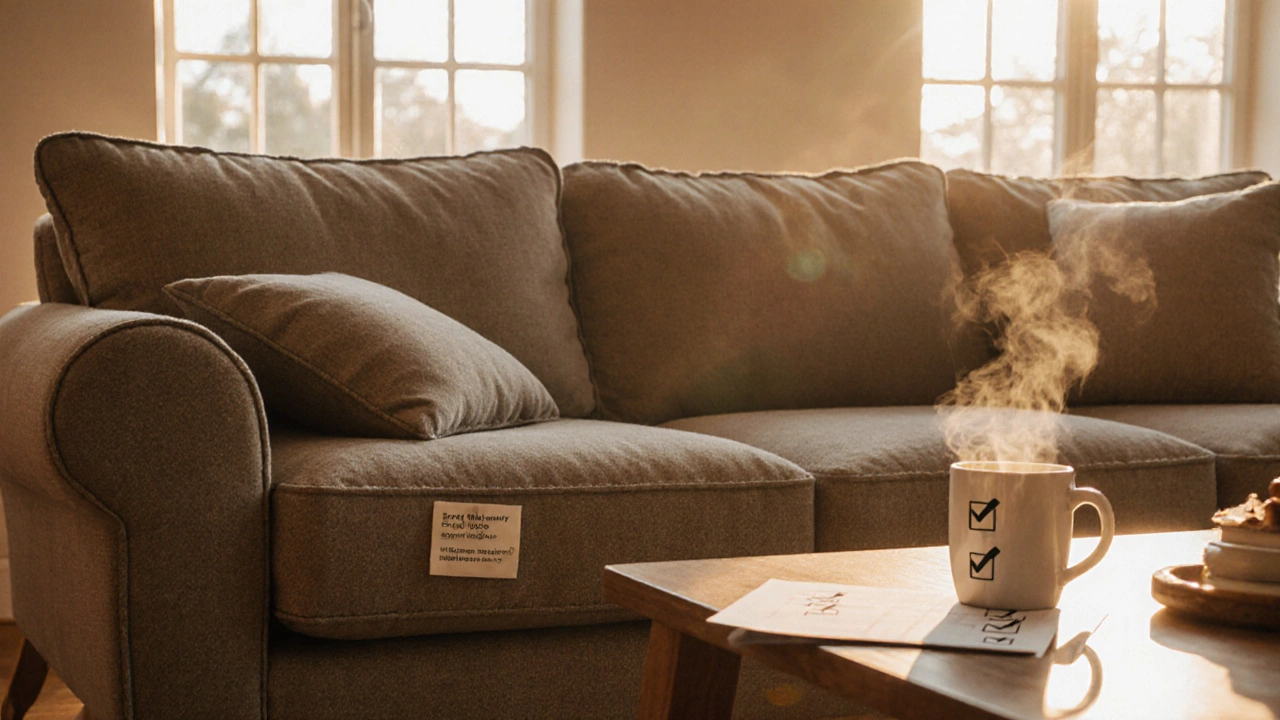
Price vs. Value: How Much Should You Spend?
High‑quality couches range from AUD 1,200 for a solid‑wood three‑seater to over AUD 5,000 for designer leather models. Use this rule of thumb: if the price seems too good to be true, the materials probably are.
Consider the couch’s expected lifespan. A $2,500 couch that lasts 15 years costs about $167 per year - a good investment compared to replacing a $800 piece every three years.
Quick Evaluation Checklist
- Inspect the frame - solid hardwood or high‑grade metal?
- Feel the springs - are they eight‑way hand‑tied?
- Check cushion density - 30 kg/m³+ foam or natural latex?
- Look at the fabric - tight weave, high abrasion rating, stain‑resistant?
- Ask about warranty - at least five years on frame, two on fabric.
- Research the brand - reviews, after‑sale service, sustainability claims.
If you can tick most of these boxes, you’re likely looking at a high‑quality couch.
Comparison of Common Frame Types
| Frame Type | Weight Capacity | Resistance to Warping | Typical Price Range (AUD) |
|---|---|---|---|
| Solid Hardwood (Beech, Oak) | 250 kg+ | High | 1,200 - 3,000 |
| Engineered Wood (MDF/Particleboard) | 150 kg | Medium (can sag over time) | 800 - 1,500 |
| Metal (Steel/Aluminum) | 300 kg+ | Very High | 1,500 - 3,500 |
Frequently Asked Questions
What density should I look for in foam cushions?
Aim for 30 kg/m³ or higher for a firm, long‑lasting feel. Densities below 20 kg/m³ tend to bottom out quickly.
Are eight‑way hand‑tied springs worth the extra cost?
Yes. They provide uniform support and recover quickly, which keeps the couch comfortable for many years.
How can I test a couch’s durability in a store?
Sit down, lean back, and shift your weight from side to side. If the seat springs creak or the cushion sags immediately, the construction is likely sub‑par.
Is leather always a better choice than fabric?
Not necessarily. Leather ages beautifully but can be expensive and may crack in hot climates. High‑performance fabrics often outperform leather in stain resistance and comfort.
What warranty should I expect for a quality couch?
Look for at least a five‑year frame warranty and a two‑year fabric/cushion warranty. Longer warranties usually mean the maker trusts their build quality.
